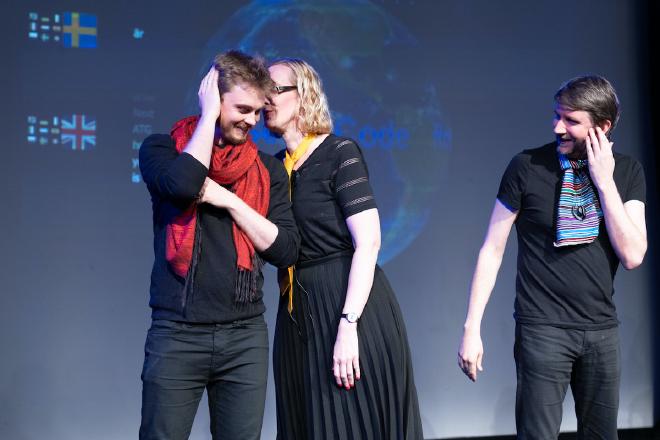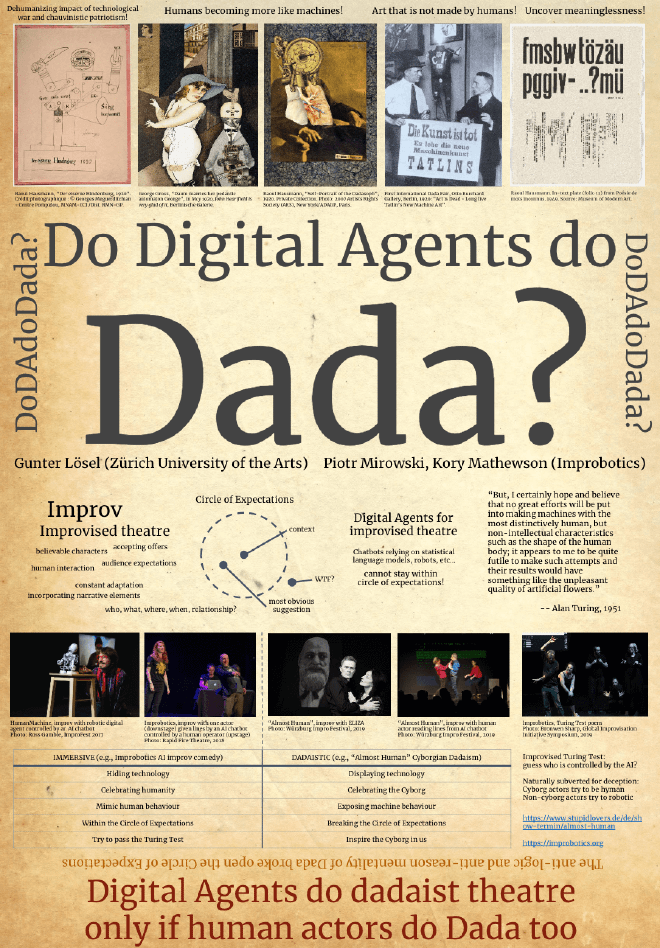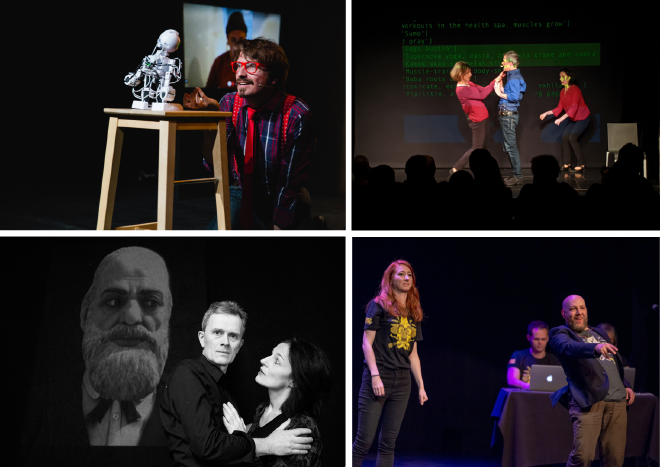Artificial Intelligence Improvisation at ICCC 2020
Table of Contents
The future of theatre is more relevant than ever. And, there will be many innovations in artificial intelligence improv (AI improv) along the way. To that end, along with some wonderful and inspiring co-authors, I have 3 works at the Eleventh International Conference on Computational Creativity Sept, 7-11, 2020:
- Rosetta Code: Improv in Any Language, Piotr Mirowski, Boyd Branch, Thomas Winters, Ben Verhoeven and Jenny Elfving. (Full paper)
- Shaping the Narrative Arc: Information-Theoretic Collaborative Dialogue, Pablo Samuel Castro, Colin Cherry, George Foster and Marc G. Bellemare. (Full paper)
- Do Digital Agents Do Dada?, Gunter Loesel and Piotr Mirowski. (Short paper and poster)
I will briefly describe each of the contributions below. I encourage you to check out the full papers, and reach out with questions or comments, if you are interested in engaging more.
Rosetta Code #
AI Improv in Multiple Languages #
Rosetta Code provides improv theatre performers with artificial intelligence (AI)-based technology to perform shows understandable across many different languages.
We combine speech recognition, improv chatbots and language translation tools to enable improvisers to communicate with each other while being understood—or comically misunderstood—by multilingual audiences.
In this paper, we describe the technology underlying Rosetta Code including the speech recognition, machine translation, text generation, and text-to-speech subsystems.
We then describe scene structures that feature the system in performances in multilingual shows in 9 different languages.
We provide evaluative feedback from performers, audiences, and critics. From this feedback, we draw analogies between surrealism, absurdism, and multilingual AI improv.
Rosetta Code creates a new form of language-based absurdist improv.
The performance remains ephemeral and performers of different languages can express themselves and their culture while accommodating the linguistic diversity of audiences.

Example of a performed Telephone Game. Performers are aligned and one whispers to their partner on the right a phrase in a foreign language (here, in Swedish), which is then repeated to the following performer, until the last utterance is voiced into automated speech recognition and translation to show how information is lost.
Shaping the Narrative Arc #
AI Improv with Controlled Generation #
We consider the challenge of designing an artificial agent capable of interacting with humans in collaborative dialogue to produce creative, engaging narratives.
Collaborative dialogue is distinct from chit-chat in that it is knowledge building. Each utterance provides just enough information to add specificity and reduce ambiguity without limiting the conversation.
In this paper, we use concepts from information theory to define a narrative arc function which models dialogue progression.
We demonstrate that the narrative arc can be used to modulate a generative conversation model to produce more interesting dialogues, compared to baseline outputs.
We focus on two modes of modulation: reveal and conceal. Empirically, we show how the narrative arc function can model existing dialogues and shape conversation models towards either mode.
We conclude with quantitative evidence suggesting that these modulated models provide interesting and engaging dialogue partners for improvisational theatre performers.

Narrative arcs over 10 utterances with concealing alpha (α) value. On the
right are utterances generated by the model after priming text (in bold) is input. The dotted red line indicates the start of narrative arc shaping.
Do Digital Agents Do Dada? #

AI Improv through the lens of Dadaism #
Do digital agents do Dadaism?
To answer this question, we review a series of theatrical experiments involving human improvisers and AI-controlled Cyborgs in front of audiences.
In this paper and poster, we describe these experiments and discuss the use of conversational digital agents (DA) on the stage.
We identify two basic strategies of staging machines: the “immersive approach”, and the “Dadaistic approach”.
Finally, we draw on Dadaistic conceptions of embracing modernity specifically in the Dadaists’ obsession with androids and cyborgs.
Digital agents do Dada if we do Dada too.

Top Left: Improv with a robotic digital agent controlled by an AI chatbot. Top Right: Improv where a human actor reads lines from the AI chatbot displayed on a screen. Bottom Left: Psychotherapist chatbot ELIZA appearing as a projection. Bottom Right: Improv (downstage) with one actor receiving lines from an AI chatbot controlled by a computer operator (upstage).
Credits at improbotics.org.